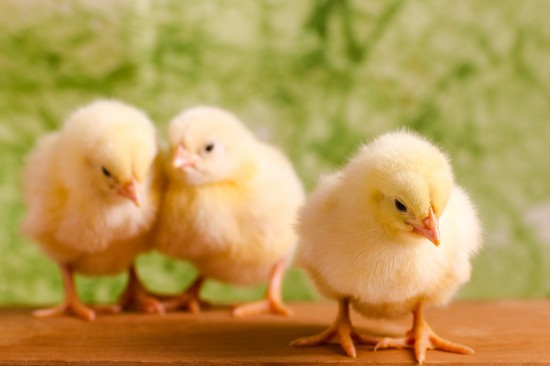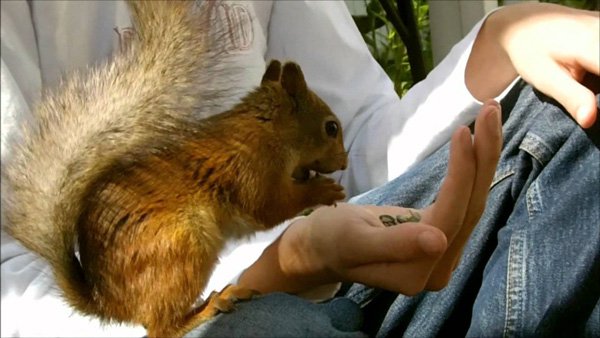

Keeping chickens in a garden is a lot of fun and if you have kids, having hens running around is a great way of introducing them to animals. It can be very exciting when you decide to put a few fertile eggs in an incubator so you can increase your stock. However, you have to bear in mind that all too often you might end up with more male chicks and females which means you need to know you can either keep them or re-home them.
A far better way to go about it is to buy some day old chicks which can be bought direct from breeders or commercial hatcheries and the best part is the chicks have already been sexed. However, mistakes are sometimes made so you may end up with a cockerel anyway. Once you’ve decided which breed or hybrid you’d like, you should try to source the chicks from personal recommendation if you can. Failing that, you can either visit a breeder in person to collect the chicks, which allows you to check that you’re happy with the cleanliness of the premises.
You should ask whether the chicks have been vaccinated against any diseases, such as Marek’s Disease, Infectious Bronchitis (IB), or salmonellosis. Healthy chicks should be active, with bright shiny eyes.
The brooder is the chicks’ nursery. For a small number of chicks, a clean cardboard box will do which can be kept indoors, or in a garage or shed. As a guide, allow an area of 0.25m2 per chick. You can start with a smaller area, and increase this as the little birds grow. You need to be sure that predators such as rats, magpies and foxes can’t get to it because if they can, they will kill the chicks. The nursery needs to have sides high enough to block draughts and to prevent chicks jumping out as they grow.
Prepare the brooder a couple of days before the chicks arrive, so that the whole environment, including the bedding, has stabilised at the correct temperature.
Bedding needs to be dry, dust free and absorbent and a two inch deep layer of wood shavings is ideal. Some people prefer to use sheets of kitchen paper on top of the shavings for the first week because some chicks may try to eat the shavings, which could prove fatal.
The litter should be kept clean and dry because damp, dirty litter will predispose chicks to diseases such as coccidiosis (an intestinal infection) and aspergillosis (a respiratory infection), both of which can lead to high mortality. Some people use a “deep litter” system, adding additional litter to the surface each day, while others prefer to change the litter completely each couple of days.
Chicks need a source of heat, which would have been provided by the mother hen if they were reared naturally. Infra-red lamps are designed to be used with livestock and they work very effectively at replacing "mum". Hang your lamp above the brood and raise it a little each week to lower the temperature as the chicks grow. The lamp should be placed at one end of the brooder so that food and water can be placed at the cooler end.
For the first week the temperature at chick height should be 32-33ºC and this needs to be reduced by 3ºC each week. After about six weeks you can dispense with the lamp altogether, as long as the temperature at night is above about 16ºC that is. You can use a thermometer to check the temperature, but you’ll find that the chicks’ behaviour will let you know if they’re not comfortable. If they’re cold, they’ll be huddled together under the lamp, and if they’re too warm, they’ll spread out around the edge of the brooder, trying to get away from the heat source.
Chicks should be fed on commercial chick crumb for the first eight weeks, after which they can be moved on to a grower meal or pellet. Make food changes gradually, by mixing the new feed with the previous one for several days. From about 16 weeks old, you should introduce them to layers mash, ensuring that grit is freely available to the chicks but don't mix this in with their food. Some people like to add electrolytes to the water for the first few days and if you do make sure you follow the manufacturer’s instructions to the letter.
If you’re not using commercial chick feeders, make sure that water containers aren’t deep enough for chicks to drown in. Red feeders are recommended, as chickens are attracted to red. Make sure you have bigger feeders ready to replace the baby chick feeders, as these will soon be outgrown by the fast growing chicks. It’s important to have enough feeders and water dispensers to allow all the birds to feed at the same time otherwise those at the bottom of the pecking order will be pushed out and therefore end up weaker.
When your chicks arrive, make sure that they all are shown the food and water – dip their beaks into the water and encourage them to peck at the feed. Chicks need to be taught where their food supply is – if they don’t learn, they will die at four to five days old when their yolk sac reserves have been depleted. A good idea is to drop a few crumbs in their water which tempts them to investigate and which helps teach them to drink.
Both food and water containers should be kept scrupulously clean to avoid the risk of disease because when very young, chicks are more susceptible to lots of nasty illnesses and diseases.
You can start teaching the chicks to perch while they’re still in the brooder. You could set up a small perch about 5cm off the ground after about four weeks, making sure that it’s not too near the lamp, or they’ll be too hot and not use it.
The “baby phase” is over by about eight weeks of age, when most breeds will be fully feathered. If the weather is good, you can introduce your chicks to the outside world from about four to five weeks of age, but they must be in a predator-proof enclosure, with shelter from rain and wind available. Out here, the chicks can learn to forage and dust-bathe. Initially, just let them out for an hour or two, with supervision.
From about eight weeks old, the chicks can move to their adult coop. There are many different types available, and which you choose will depend on the space available and your budget.
Rearing chicks from day old can be a rewarding experience, but it does involve a lot of hard work and attention to detail. The reward is well worth the effort though because when they reach laying age, you’ll have hens that know you well. Your birds will insist on following you around wherever you go because they are happy, healthy and settled in their environment.
 Does your dog do its exercise?
Does your dog do its exercise?
Pooches can be
Does your dog do its exercise?
Does your dog do its exercise?
Pooches can be
 Seven Indications That You Need To Change Your Dog Food
Seven Indications
Seven Indications That You Need To Change Your Dog Food
Seven Indications
 10 Of The Most Interesting And Useful Ferret Facts
10 Of The Most In
10 Of The Most Interesting And Useful Ferret Facts
10 Of The Most In
 Problems That Can Arise From Weaning Puppies Too Early
Problems That Can
Problems That Can Arise From Weaning Puppies Too Early
Problems That Can
 Eight Misleading Myths That Can Lead To Reluctance To Spay Or Neuter
Eight Misleading
Eight Misleading Myths That Can Lead To Reluctance To Spay Or Neuter
Eight Misleading
Copyright © 2005-2016 Pet Information All Rights Reserved
Contact us: www162date@outlook.com